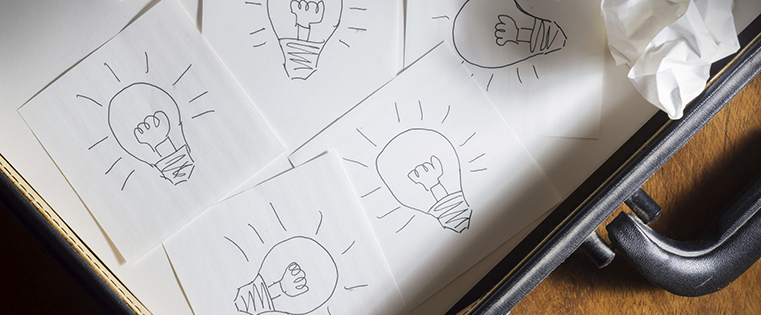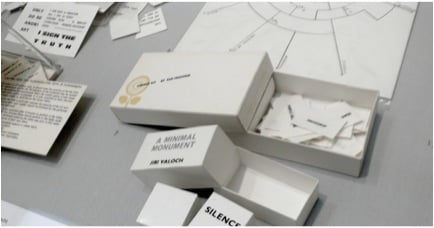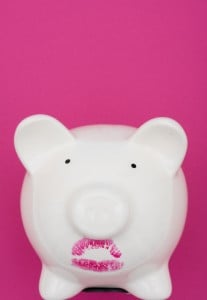

There's a unique sort of catharsis that comes with clicking "Export." After days, weeks, or even months of drafting, prototyping, and designing, you are finally able to look at your completed project with confidence. So that's it, right?
If you're anything like me, then yes, that's it. As soon as I get my design to a point that I'm pleased with, I'm packaging the file and backing up the final version in Dropbox before I have another thought. Immediately, I email the final export to the client for review and dive headlong into the next project on my lengthy to-do list.
Yet, no matter the level of confidence you have about your latest design, you must be weary of your own bias as you review your work. It is easy for creatives to overlook both minor inconsistencies and major usability flaws in the final stages of a project.
Thankfully, with the rise of design show-and-tell outlets such as Dribbble and platforms for team feedback and collaboration, sending a draft straight to the client is hardly encouraged. But despite the increase in productivity all of these tools are meant to provide, often the most productive thing you can do for your creativity is slow down. Even before you ping a screenshot over to your coworker, you must ask -- and honestly answer -- a few hard questions about the quality of your work.
5 Questions to Ask When Critiquing Your Own Design
Next time you feel the itch to fast-forward to your next project, remember the value of self-evaluation and consider these questions. You'll be a better designer for it, your client will be more satisfied, and the user will have an all-around better experience.
1) How does your design fit within your client's brand?
This, of course, is a tip straight from the basics of design. It is absolutely crucial to consider if your design follows your client's brand guidelines. But now that your design is presumably done, can you still answer "yes" to this question?
Sometimes, it is easy to begin within the limits of a style guide as you first open your artboard. But as the design forms and ideas develop, ensure your work has remained grounded in how the client expects you to portray their brand.
On the other hand, crafting an exact replica of everything else the business has ever created is not the smartest choice either. Don't get me wrong, consistency is the mark of a professional designer. But how does your design advance the quality of the brand, not simply parrot it?
The balance between adhering to a brand's visual standards and pushing the bar of innovation can be difficult to master. An honest evaluation of this can only be done at the conclusion of the creative process.
2) How does your design fit within current design trends?
Trends are dangerous. Often, they are easy to apply and even easier to do so blindly.
For any design trend you use, make sure it has evergreen potential. As they always do, trends will shift and transform before your eyes. To prevent yourself from cringing at your own design a year later, consider purpose closely.
For every design that you like in your search for inspiration, note why you like it. Think about what makes it work. The issue with trends is we often apply elements to our work subconsciously simply because of their prevalence in the design blogs and forums we browse on a daily basis. Especially as you near the completion of your project, challenge yourself to rethink why you are using specific elements.
Of course, there are few feelings worse than finishing up your work, just to second guess all of your thinking. Yet, more often than not, if your gut is telling you to reconsider, your next attempt will be better than the first.
3) How does your design work for the client?
Often, the hardest part of any creative endeavor is escaping the confines of your own mind and jumping into the shoes of your audience. As creatives, it's as if we wear a pair of invisible blinders preventing us from noticing our own typos or realizing that the focal point of a landing page is nowhere near where it should be.
As the creation process comes to a close, turn away from your screen and pull out a notebook. Imagine yourself in the presentation of your design and anticipate every question your client will ask: Why is this call-to-action button placed to the right of the text and not below it? Why does one button have a shadow and another doesn't? What was your rationale behind the font family on the hero image?
Jot down notes for any inquiry you can't answer, and consider specific ways to tweak your design accordingly. Not only will this exercise help you to identify holes in your design's functionality, but this will also help you formulate logical answers to your client's inquiries and put aside any emotional attachment you may toward your work. Despite the additional time it will take you, the productivity of your next client meeting will make up for it.
4) How does your design work for the user?
Now that you've evaluated your design for the anticipated reactions of your clients, it's time to question if your design works for the person who actually matters the most: the user. No matter what questions of objections the client is likely to conjure, if you have the best interest of the user in mind, you will have a response that is more proactive than defensive.
However, solving for the user is not accomplished through the overarching strategy. Usability proves itself in the smallest of decisions: Why is the state of the button blue? How does the navigation appear on mobile? Does the link open in a different browser window?
As you evaluate for usability, approach your design with fresh eyes. As innovative as the page elements may appear, the user will not be impressed by poor functionality and slow load times. They will move on without thinking twice.
5) How does your design fit into the buyer's journey?
If consistency is the mark of a good designer, cohesiveness is the mark of a good marketing designer. It is natural to want your designs to be innovative, awe-inspiring pieces of art. But as a marketer, it is vital to zoom out and ensure the design leads the user seamlessly to the next stage of the buyer's journey. Marketing cannot function within a silo.
What is the end goal for the user? Is it to build brand awareness or to provide your client's sales team with qualified leads?
As a designer, you must live and breathe the world of content marketing. Consider how your design nurtures your audience toward the final goal of the client. Every decision, from links to header formatting, must be viewed as an opportunity to communicate the services, culture, and promise of the brand.

![10 Things You Should Never Say to a Graphic Designer [Infographic]](http://53.fs1.hubspotusercontent-na1.net/hubfs/53/00-Blog_Thinkstock_Images/mad-designer.png)








